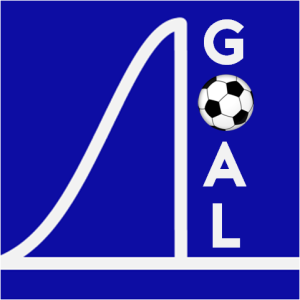Month: June 2016
Euro 2016 – Third round of group matches, assessing the model
Just 22 goals were scored in the final round of group matches, averaging 1.8 per game. Group F provided the only incentive fuelled high scoring denouement. Perhaps the 24 team structure generated more caution than usual for the final group matches, as this is historically the highest scoring stage of a tournament. As a result my model overestimated the number of goals…
Euro 2016 – Second round of group matches, model assessment
As expected the scoring rate has increased in the second round of group matches, to 2.1 from 1.8 per game in the first round of matches. This reflects the need of some teams to eschew their initial caution. Even so, scoring rate is still historically low, in previous tournaments the average rate for the second round has been at…
Euro 2016 – first round of group matches, model assessment
As expected the first round of group matches has been low scoring, with an average of 1.83 goals per game, this is even lower than the historical average 2.10. Strangely though we haven’t seen a 0-0 draw, with match results clustered around a few outcomes: 1-0, 1-1, 2-0 and 2-1. My model expected a total of 25.6 goals…
Euro 2016 by charts
Squad strength This chart segments squads into strength of the club teams they play for. I’ve used Euro Club index to determine the best teams. The top 6 ranked teams (Barcelona, Real Madrid, Bayern Munich, Atletico Madrid, Paris Saint Germain and Juventus) are categorised as “elite” teams, the remaining top 25 teams as “good”, and any other club in the…
Euro 2016 – full projection
After creating attack and defence ratings for the 24 Euro 2016 teams, based on their underlying squad strength (as described here), I can run simulations to look at the likelihood of different tournament outcomes, including the winner. My projection simulates the score of each match for 5000 different possible tournament outcomes – including potential extra time…
Euro 2016 – Assessing international teams
International football is difficult to analyse. Unlike domestic league football, where vast quantities of data exist to assess team and player performance in a variety of conditions, negligible relevant data is available for international football. It is, by its nature infrequent – so tournament line-ups may bear little resemblance to those of previous matches –…
